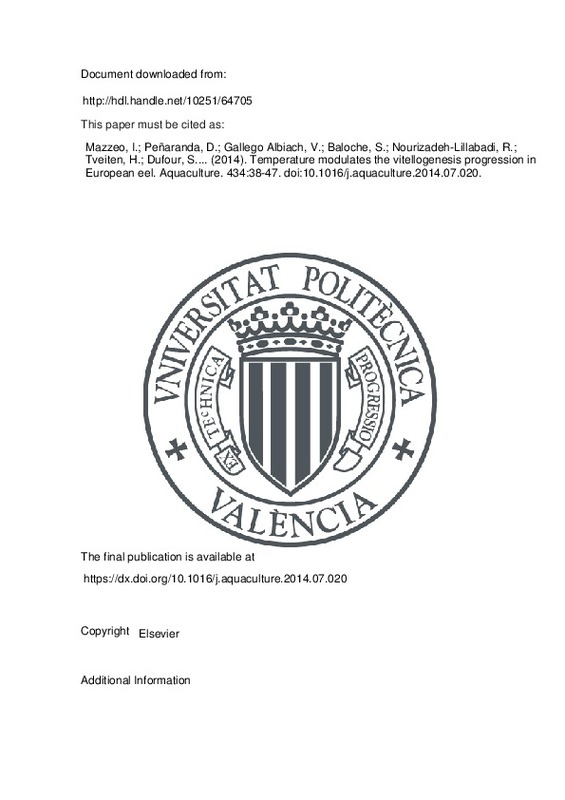JavaScript is disabled for your browser. Some features of this site may not work without it.
Buscar en RiuNet
Listar
Mi cuenta
Estadísticas
Ayuda RiuNet
Admin. UPV
Temperature modulates the vitellogenesis progression in European eel
Mostrar el registro completo del ítem
Mazzeo, I.; Peñaranda, D.; Gallego Albiach, V.; Baloche, S.; Nourizadeh-Lillabadi, R.; Tveiten, H.; Dufour, S.... (2014). Temperature modulates the vitellogenesis progression in European eel. Aquaculture. 434:38-47. https://doi.org/10.1016/j.aquaculture.2014.07.020
Por favor, use este identificador para citar o enlazar este ítem: http://hdl.handle.net/10251/64705
Ficheros en el ítem
Metadatos del ítem
| Título: | Temperature modulates the vitellogenesis progression in European eel | |
| Autor: | Mazzeo, Ilaria Baloche, Sylvie Nourizadeh-Lillabadi, Rasoul Tveiten, H. Dufour, Sylvie Weltzien, Finn-Arne | |
| Entidad UPV: |
|
|
| Fecha difusión: |
|
|
| Resumen: |
[EN] Wild female European eels were matured with CPE (carp pituitary extract) under three thermal regimes, two of
which were variable (T10–15 and T15–18, moving from 10 to 15 °C and from 15 to 18 °C, respectively) and ...[+]
|
|
| Palabras clave: |
|
|
| Derechos de uso: | Reserva de todos los derechos | |
| Fuente: |
|
|
| DOI: |
|
|
| Editorial: |
|
|
| Versión del editor: | https://dx.doi.org/10.1016/j.aquaculture.2014.07.020 | |
| Código del Proyecto: |
|
|
| Agradecimientos: |
This study was funded by the European Community's 7th Framework Programme under the Theme 2 "Food, Agriculture and Fisheries, and Biotechnology", grant agreement no.245257 (PRO-EEL). Ilaria Mazzeo and Victor Gallego had ...[+]
|
|
| Tipo: |
|







![[Cerrado]](/themes/UPV/images/candado.png)


